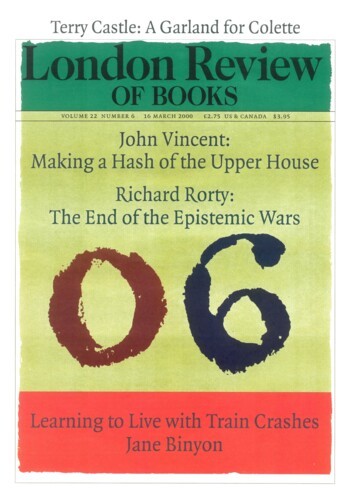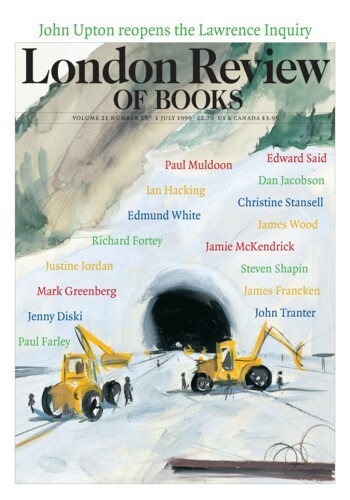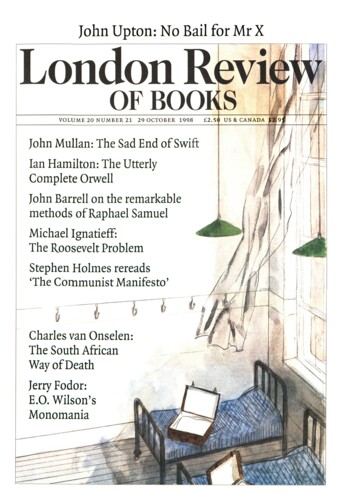Ready to Rumble
John Upton, 16 March 2000
‘Some day they’re gonna write a blues song for fighters. It’ll just be for slow guitar, soft trumpet and a bell.’ So said Sonny Liston in 1962, after he’d beaten his closest rival, Floyd Patterson, and become Heavyweight Champion of the World. Liston was not known for his sensitivity. Indeed, the facts of his life read like a blueprint for a Hollywood film of the flawed fighter. He was born in Arkansas, the 24th of 25 children. He never knew the date or exact place of his birth, and he was illiterate. He was sent out to work in the fields at the age of eight, picking cotton, peanuts and sweet potato. He was beaten prodigiously by his father and the welts he received were still visible on his adult body. When his mother left Arkansas to find work in St Louis he followed her, but he was unable to hold down a job and turned to crime. By the age of 16 Liston was over six feet tall and weighed more than 200 pounds. He was violent as well as strong and earned his first title, that of ‘Number One Negro’ on the St Louis police wanted list, in 1949. In 1950, he was convicted of armed robbery (his haul was $37). He was introduced to boxing at the Missouri State Penitentiary.‘



